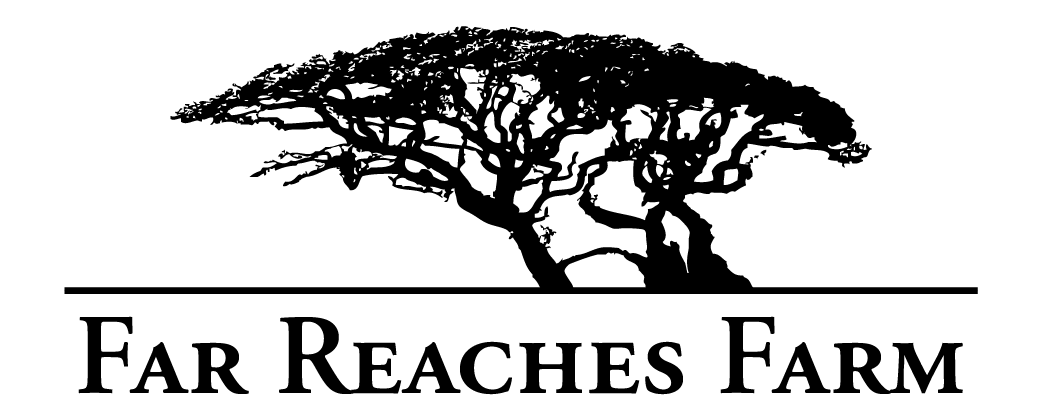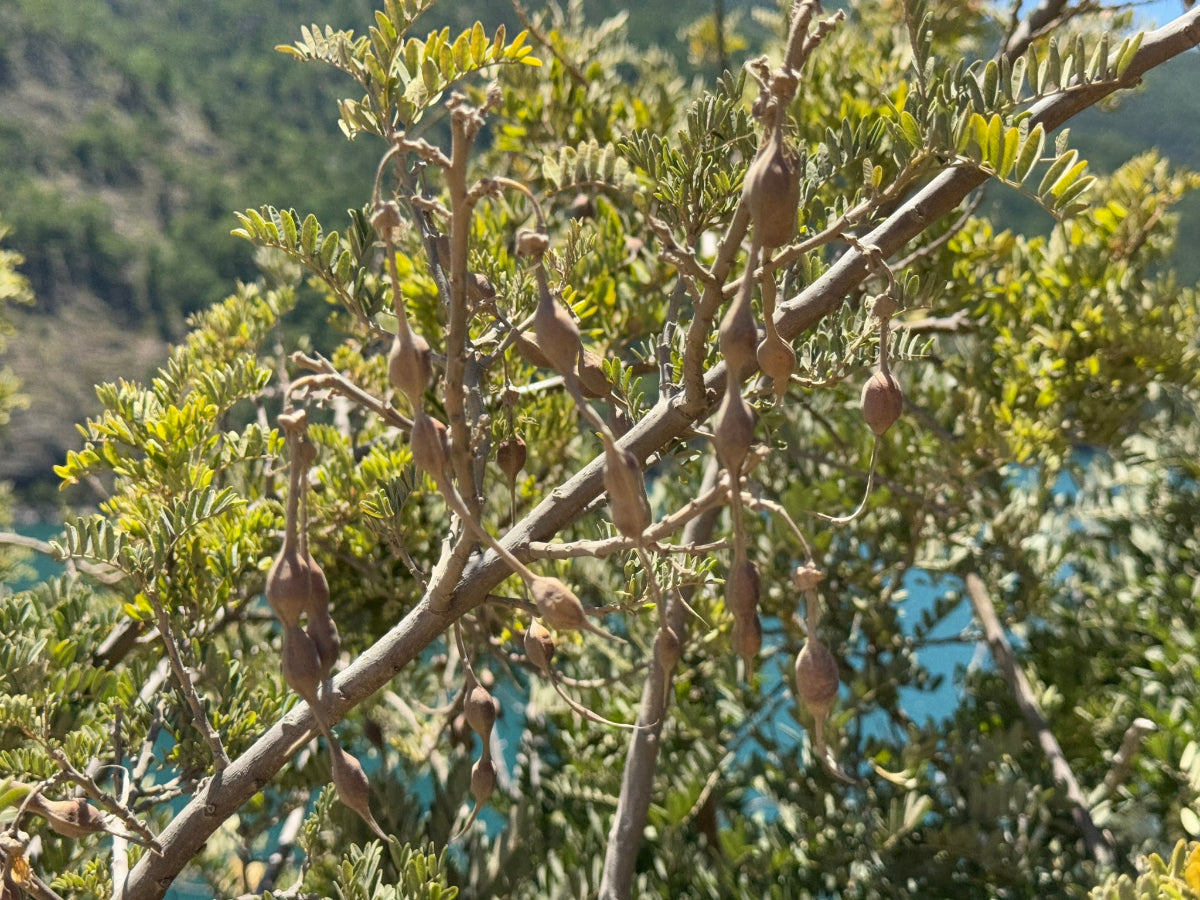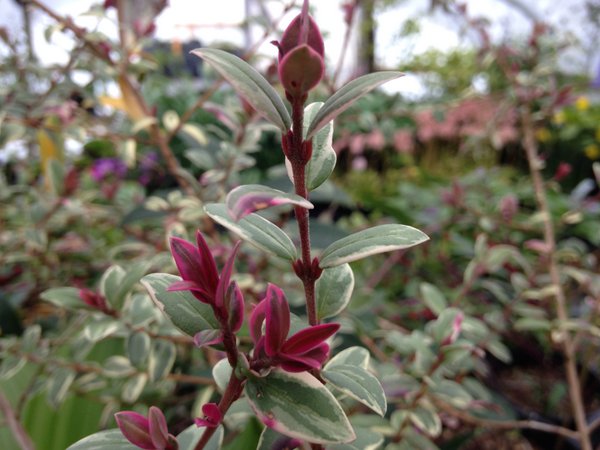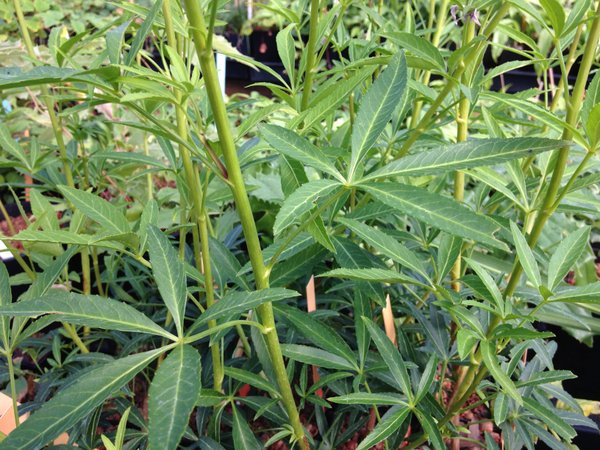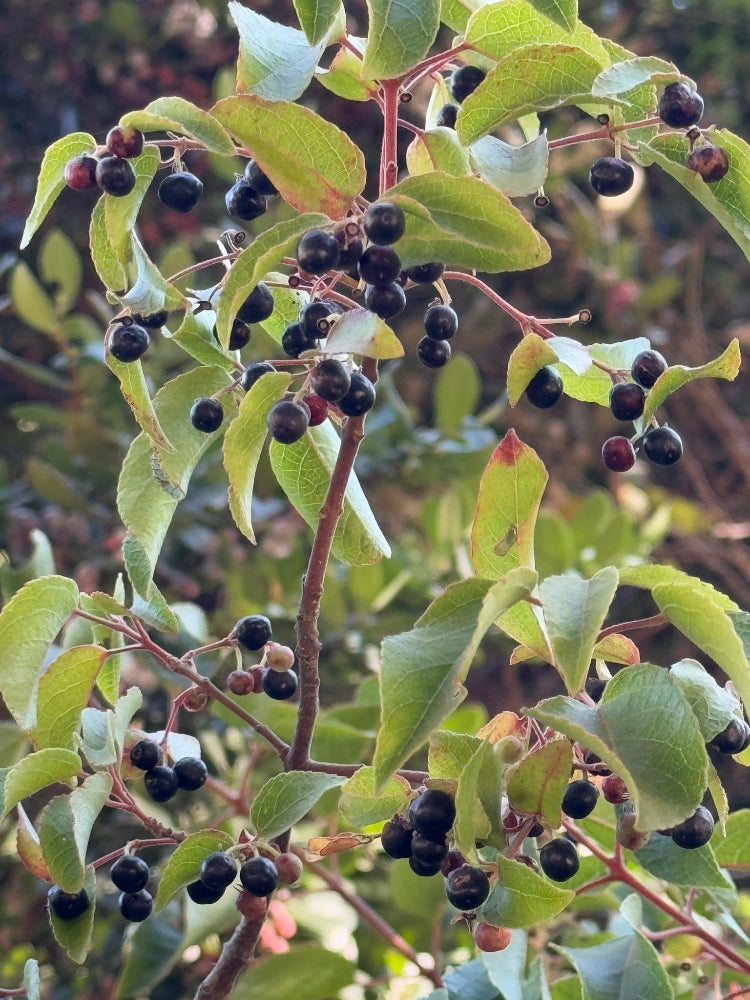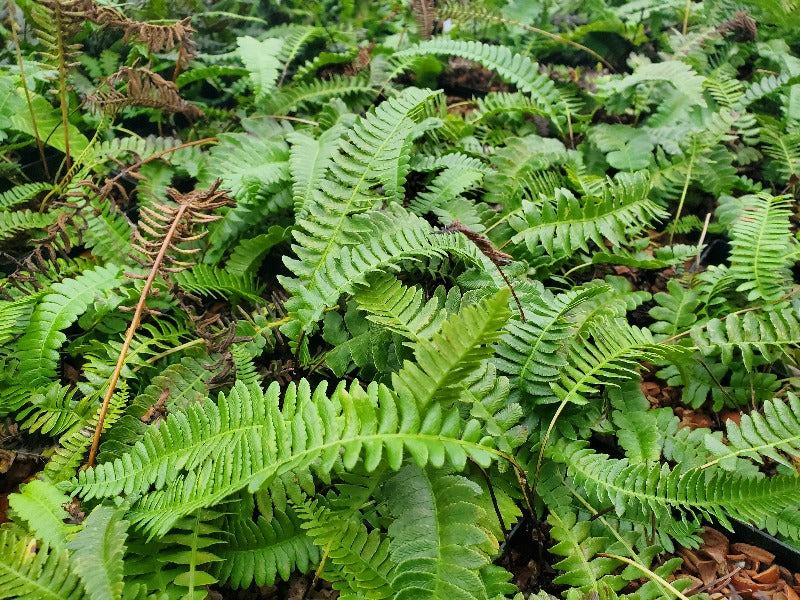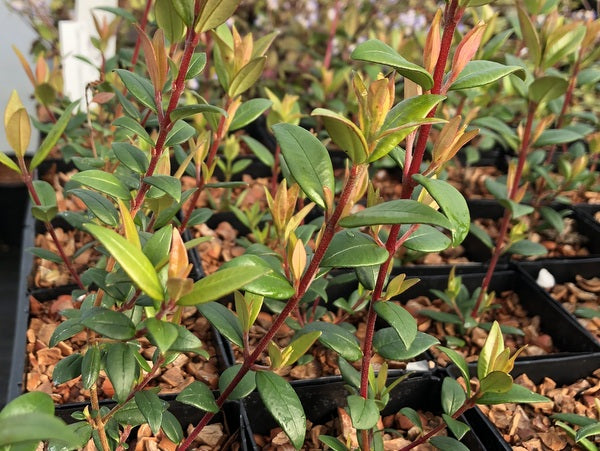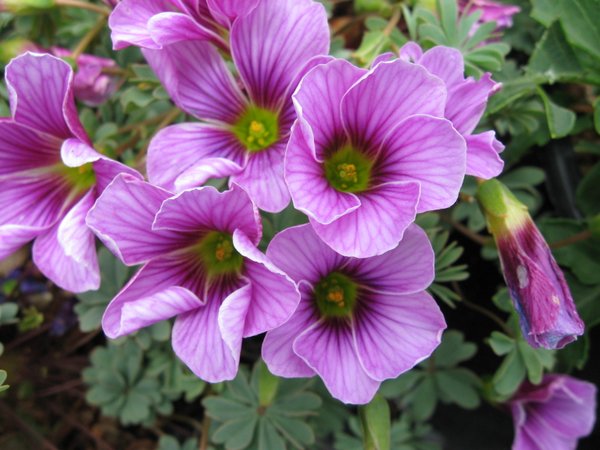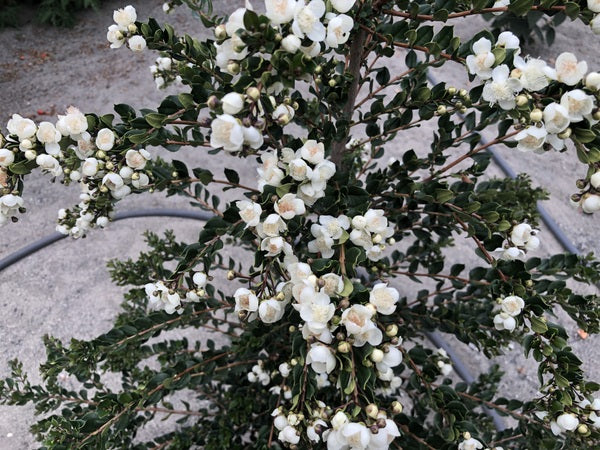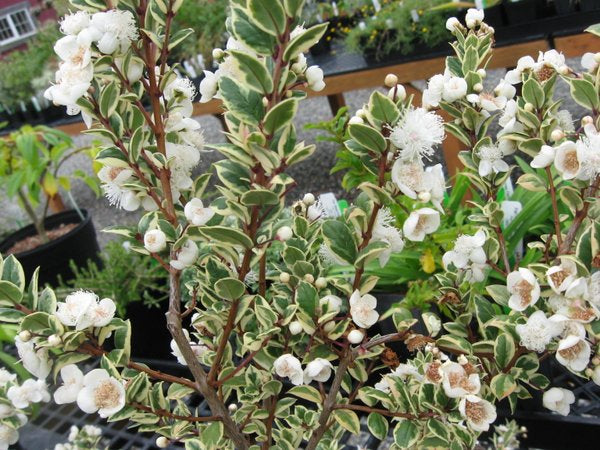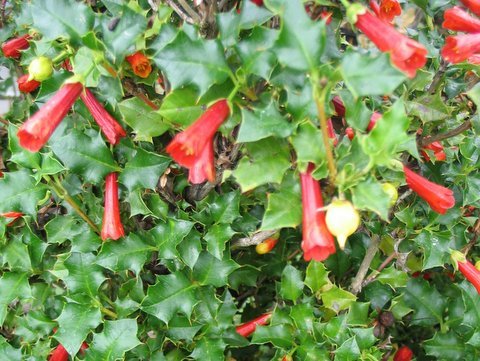Sort by:
33 products
33 products
A Chilean collection of this narrow-endemic shrub of the pea family locally known as mayo, though with none of the plainness of its homonymic counterpart. This boasts the lovely elongated golden bells one loves the genus for but adds in evergreen foliage, and of a richly lustrous dark green no less. This of course comes with the caveat of less-than-hardiness, with those plants grown in the UK favoring mild coastal spots, though the genetics of this batch have yet to be winter tested. A lovely bit of exotica for the adventurous type or beneficiary of the Bay clime.
Chilean Fire Tree. One of the most dramatic plants for our area. This requires our cool and moderate climate where it can become a 20' + narrow deciduous tree that is usually multi-trunked. In late May and June, this is a tower of blazing red-orange tubular flowers and you will get little else done other than answering questions from the neighbors about just what is that tree and eventually there will be strangers knocking on your door inquiring and if you plant a grove then there is the inevitable issue of tour buses with which to contend. Best protected from freezing winds, ours is fully exposed to such but we wrapped the trunk the first few years when we dropped into the teens but now we just give it tough love and do nothing. Being in the Proteaceae, they don't enjoy phosphorous so be careful what you fertilize them with - it is the P in the NPK ratio to which they are allergic. Rather than think too hard on it, we just ladle some dairy manure around our plants in early spring.
Maqui, a chance to live like the locals do, this rare and reportedly tasty (somewhat like a tangy blueberry) fruit with the equally tasty common name of wineberry grows only in Argentina and Chile. Luckily we received wild seeds from FRBC board member Cody Hinchliff! The glossy evergreen leaves are not the commercial selling point here but are nonetheless pleasant enough. Unfortunately these are frost-sensitive so unless we can somehow coax them into fruiting in the greenhouses we will remain jealously unawares of the flavor of both wine and fruit, but we make this sacrifice for you our adventurous customer base. (We expect a refrigerated truck bearing the bountiful results of your cultivation!)
Native to Chile, this is in the Solanaceae and will become a 4'-6' evergreen shrub with drooping and narrowly tubular yellow flowers with long exserted stamens. The foliage is a bit unpleasant when crushed - and only then - which makes us think it will be deer proof. Has proved hardy outside in our PT frost pocket for a good decade now, may get cut back by the fiercest winters but bounds back quickly. Good for a sunny position and was given the Award of Garden Merit by the Royal Horticultural Society.
*LIMIT 2 PER CUSTOMER*
Chameleon Vine. Crazy evergreen vine from the temperate forests of Chile and Argentina which only very recently was found to mimic the plants upon which it grows. The leaves increase or decrease in size, get darker or lighter, broader or narrower depending on its host or nearby plant. Flowers are insignificant on this science project.
This is one of those plants worth the greenhouse space if you can't grow it outside, which we can't. An evergreen vine from Chile where it is the national flower and once you see this bloom, it will likely be your personal national flower as well. Big waxy pendant flowers of typically a rose red, but can be white to pink to dark red. These are seedlings from our friend Ilse who has some of these other colors as well. While these are seed from her rose red plant, there may have been some interesting co-mingling going on with the greenhouse doors open at night and the hawk moths out and about, but pretty sure these will be rose red.
These normally flower in late summer and fall, and we were entranced by beautiful specimens in bloom when we visited the west of Scotland in the fall of 2013. A memorable moment was getting asked to leave the Chilean Terrace at the Royal Botanic Garden Edinburgh where this was flowering beautifully against a wall. We have no idea how they found us at closing time as we were one with the Lapageria and our pleas "But the Lapageria is in flower" were met with polite firmness and an aura of "If I just had a few bob for every time I've heard that". Small plants but strong and well rooted.
